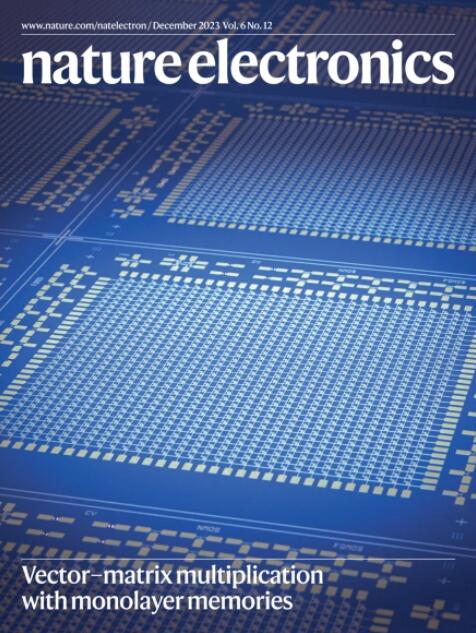基于钆镓石榴石衬底深各向异性刻蚀的高性能静磁波谐振器
IF 33.7
1区 工程技术
Q1 ENGINEERING, ELECTRICAL & ELECTRONIC
引用次数: 0
摘要
基于钇铁石榴石(YIG)的静磁波谐振器是未来通信滤波器的一个很有前途的技术平台。这种设备在7千兆赫及以上的范围内比声学谐振器表现出更好的质量因素。然而,这些谐振器的耦合系数被限制在3%以下,这主要是由于与用于生长单晶YIG的衬底材料钆镓石榴石(GGG)的图案相关的微制造挑战导致的设计空间有限。在这里,我们报告了通过GGG衬底的各向异性蚀刻产生的静磁波谐振器。我们的方法是基于YIG-on-GGG平台,使用具有发夹状结构的传感器。它是通过开发一种微加工方法创建的,该方法涉及GGG衬底的减薄和深度蚀刻(高达100 μm)。所得的静磁波谐振器在6-20 GHz频率范围内的耦合率超过8%。本文章由计算机程序翻译,如有差异,请以英文原文为准。


High-performance magnetostatic wave resonators based on deep anisotropic etching of gadolinium gallium garnet substrates
Magnetostatic wave resonators based on yttrium iron garnet (YIG) are a promising technology platform for future communication filters. Such devices have demonstrated better quality factors than acoustic resonators in the 7 GHz range and above. However, the coupling coefficients of these resonators have been limited to less than 3%, primarily due to the restricted design space that is a result of microfabrication challenges related to the patterning of gadolinium gallium garnet (GGG), the substrate material used for growing single-crystal YIG. Here we report magnetostatic wave resonators created through the anisotropic etching of GGG substrates. Our approach, which is based on the YIG-on-GGG platform, uses a transducer with a hairclip-like structure. It is created by developing a microfabrication methodology that involves thinning and deep etching (up to 100 μm) of the GGG substrate. The resulting magnetostatic wave resonators exhibit a coupling of more than 8% in the 6–20 GHz frequency range. A microfabrication methodology that involves thinning and deep etching of gadolinium gallium garnet substrates can be used to create magnetostatic wave resonators that exhibit a coupling of more than 8% in the 6–20 GHz frequency range.
求助全文
通过发布文献求助,成功后即可免费获取论文全文。
去求助
来源期刊

Nature Electronics
Engineering-Electrical and Electronic Engineering
CiteScore
47.50
自引率
2.30%
发文量
159
期刊介绍:
Nature Electronics is a comprehensive journal that publishes both fundamental and applied research in the field of electronics. It encompasses a wide range of topics, including the study of new phenomena and devices, the design and construction of electronic circuits, and the practical applications of electronics. In addition, the journal explores the commercial and industrial aspects of electronics research.
The primary focus of Nature Electronics is on the development of technology and its potential impact on society. The journal incorporates the contributions of scientists, engineers, and industry professionals, offering a platform for their research findings. Moreover, Nature Electronics provides insightful commentary, thorough reviews, and analysis of the key issues that shape the field, as well as the technologies that are reshaping society.
Like all journals within the prestigious Nature brand, Nature Electronics upholds the highest standards of quality. It maintains a dedicated team of professional editors and follows a fair and rigorous peer-review process. The journal also ensures impeccable copy-editing and production, enabling swift publication. Additionally, Nature Electronics prides itself on its editorial independence, ensuring unbiased and impartial reporting.
In summary, Nature Electronics is a leading journal that publishes cutting-edge research in electronics. With its multidisciplinary approach and commitment to excellence, the journal serves as a valuable resource for scientists, engineers, and industry professionals seeking to stay at the forefront of advancements in the field.
 求助内容:
求助内容: 应助结果提醒方式:
应助结果提醒方式:


